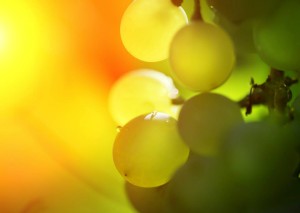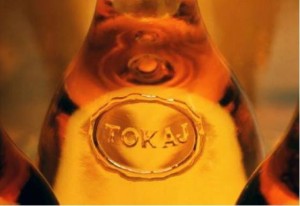Tokaj: Climate change transforms global wine market
The results of terroir research help wine regions adapt to changing environmental conditions
In the coming years and decades climate change will cause several internationally recognized wine regions to face falling crop yields, the emergence of the need for irrigation, and the narrowing of the range of grape varieties that can be grown economically. On the other hand, some wine regions located at higher latitudes could actually benefit from the changes as the average temperature increases in the vegetation period and plant diseases related to the volume of precipitation diminish. The rapid development of solutions applied in terroir research could help accurate impact assessment and adaptation. This branch of science, which is increasingly important for the operation of the wine industry, can also contribute to enabling the various wine regions to preserve their unique product structures, a speaker stated at the 10th International Terroir Congress, held in Hungary’s Tokaj Wine Region between 7-10 July.
 Budapest, 8 July 2014: « We can expect significant differences even within a country in how climate change will affect grape growing and winemaking, so every major winemaking country needs wine region-level assessments to prepare for the consequences of climate change. International research studies suggest that the average temperature will rise by 1.24 degrees Celsius in the Earth’s winemaking regions in the first half of the 21st century as compared to the 1950-1999 period. This, however, conceals considerable differences – the extent and rate of warming could vary from one country to another, having different effects on the conditions of grape growing. »
Budapest, 8 July 2014: « We can expect significant differences even within a country in how climate change will affect grape growing and winemaking, so every major winemaking country needs wine region-level assessments to prepare for the consequences of climate change. International research studies suggest that the average temperature will rise by 1.24 degrees Celsius in the Earth’s winemaking regions in the first half of the 21st century as compared to the 1950-1999 period. This, however, conceals considerable differences – the extent and rate of warming could vary from one country to another, having different effects on the conditions of grape growing. »
Portugal, for example, which has achieved significant successes in the international wine market, should anticipate opposing trends despite the country’s relatively small size. “Portuguese wine regions that are located at lower latitudes and/or further from the Atlantic coast, in a drier climate, should expect drought periods to become more frequent. As a consequence, crop yields may fall and there may be an increased need for irrigation, which could be accompanied by the narrowing of the grape varieties that can be grown economically. In the period immediately preceding the harvest, however, the increase in average nightly temperatures and the decrease in temperature variation could entail a decline in the quality of the wine that can be produced, presenting winemakers with yet another challenge”, Gregory V. Jones, research climatologist at Southern Oregon University told the 10th International Terroir Congress.
At the event, held between 7-10 July in Tokaj, Hungary and sponsored by the International Organisation of Vine and Wine, Mr. Jones also said that in contrast, in the Portuguese wine regions that lie in the country’s northern part or are more exposed to the effects of the Atlantic, the rising average temperature of the vegetation period will cause precipitation-related plant infections and diseases to diminish. In other words, producers in these regions could even benefit from the changing climate.
Similar tendencies should be expected all over the world, and Hungary, the host country of the congress, is no exception. “It is difficult to model the exact trends in advance, but all data indicate that we should anticipate continuous warming in the Carpathian Basin in the coming period”, explained Borbála Bálo, associate professor at the Corvinus University of Budapest. She believes that the transformation of climatic conditions could bring about simultaneous changes in the acidity, aroma composition and alcohol content of wines. In certain cases this may even make it necessary to revise the list of grape varieties grown. The key to success is adaptation, and terroir research could provide the required foundations. The studies could also help enable the various wine regions to preserve their unique product structures.
In addition to examining the geological and climatic conditions of a given area, terroir research also looks at grape varieties, growing technologies, winemaking methods – and even the viticulturist/winemaker. The terroir approach is particularly popular in Europe’s winemaking regions. The labels on North American wine bottles usually highlight the grape variety, while most European wineries first state the name of the wine region, which indicates the origin of the wine. The recognition of the terroir associated with a particular wine region is also reflected in the consumer price of the product.
 Hungary, the host country of the 10th International Terroir Congress, has recently seen the launch of a terroir research initiative significant even by European standards, aimed at surveying the entire winegrowing area of the Tokaj Wine Region. “In the first phase of the survey the vineyard inspectors of Tokaj Kereskedőház Zrt. – known as the largest winery in this iconic Hungarian wine region – already completed the work in an area of 1,100 hectares, on 3,800 plots of land where the state-owned integrator company regularly buys grapes from in the harvest season. In the next phase, launched a few weeks ago, the survey will be extended – with assistance from the Tokaj Wine Region Council of Wine Communities – to the entire area of the Tokaj Wine Region where grapes are, or could potentially be, grown, which means about 11,000 hectares”, said Dr. György Lukácsy, the viticulture specialist engaged by Tokaj Kereskedőház to coordinate the survey in the Tokaj region.
Hungary, the host country of the 10th International Terroir Congress, has recently seen the launch of a terroir research initiative significant even by European standards, aimed at surveying the entire winegrowing area of the Tokaj Wine Region. “In the first phase of the survey the vineyard inspectors of Tokaj Kereskedőház Zrt. – known as the largest winery in this iconic Hungarian wine region – already completed the work in an area of 1,100 hectares, on 3,800 plots of land where the state-owned integrator company regularly buys grapes from in the harvest season. In the next phase, launched a few weeks ago, the survey will be extended – with assistance from the Tokaj Wine Region Council of Wine Communities – to the entire area of the Tokaj Wine Region where grapes are, or could potentially be, grown, which means about 11,000 hectares”, said Dr. György Lukácsy, the viticulture specialist engaged by Tokaj Kereskedőház to coordinate the survey in the Tokaj region.
As a result of the survey a huge database is being compiled, which will make it possible – through the use of GIS (geographical information system) methods – to prepare maps with an accuracy of 20×20 centimeters of each piece of land surveyed according to dozens of criteria. The survey, which also covers the state of vineyards and the characteristics of winegrowing areas, is indispensable for taking the best advantage of those characteristics in cultivating existing vineyards, making modifications or planning new plantations. All this is essential for the success of the complete reform announced in the Tokaj Wine Region with the objective of re-establishing the recognition of Tokaj wines in the domestic and international markets by focusing on state-of-the-art production in this wine region, which has some of the best characteristics in the world.
About the International Terroir Congress:
The first International Terroir Congress was held in Angers, France in 1996. The biennial congress has since then evolved into one of the most prestigious events presenting research that analyzes the uniqueness of winegrowing regions and the wines produced there – in accordance with the increasing significance attached to the protection and demarcation of growing regions globally. So far the event has only been hosted by towns of France, Italy, Spain, Switzerland and South Africa. That is why it is a great achievement in itself that the Tokaj is the venue of the 10th International Terroir Congress. The term “terroir” is derived from the Latin word “terra”, which can mean earth, soil or (growing) region. Soil and the growing region play a vital part in grape and wine production, but the term “terroir” tells consumers more than that: it does not only denote the region in question, but also includes climatic conditions, grape varieties, growing technologies, winemaking methods – and even the viticulturist/winemaker.
About Tokaj Kereskedőház Zrt.:
Tokaj Kereskedőház Zrt. is the largest winery and a key player in the Tokaj Wine Region. The national winery, owned by the Hungarian State, has been the primary preserver and guardian of Hungary’s winemaking traditions as the number one winemaker the historical Tokaj Wine Region, which has been on UNESCO’s World Heritage List since 2002. The company is mainly engaged in growing and purchasing wine grapes, wine production and sale, and various wine tasting programs. Tokaj Kereskedőház has a 70-hectare vineyard of its own, plus it buys grapes from almost 1,500 small farms covering an area of 1,000 hectares. It illustrates the company’s development that in October 2013 it embarked on a capital investment project worth several billion forints at its Tolcsva plant, aimed at installing tanks with built-in cooling technology, constructing a new bottling plant and creating the related infrastructure.
About the Tokaj Wine Region Council of Wine Communities:
The Tokaj Wine Region Council of Wine Communities was established in 1995 to coordinate and professionally review the policies and regulations of wine communities in the Tokaj Wine Region, systematize their reporting procedures, and help and organize economic cooperation and access to markets. In addition, the Council also manages matters of origin and quality protection in the wine region, and checks compliance with the laws related to grape growing and winemaking. The Tokaj Wine Region consists of 27 towns and villages in total, which have formed eight wine communities. The eight communities – Bodrogkeresztúr-Bodrogkisfalud-Szegi, Mád, Olaszliszka, Rátka, Sárospatak, Tarcal, Tállya-Golop and Tolcsva-Erdőhorváti – delegate a total of 16 representatives to participate in the work of the Tokaj Wine Region Council of Wine Communities.
©Tokaj Kereskedohaz
